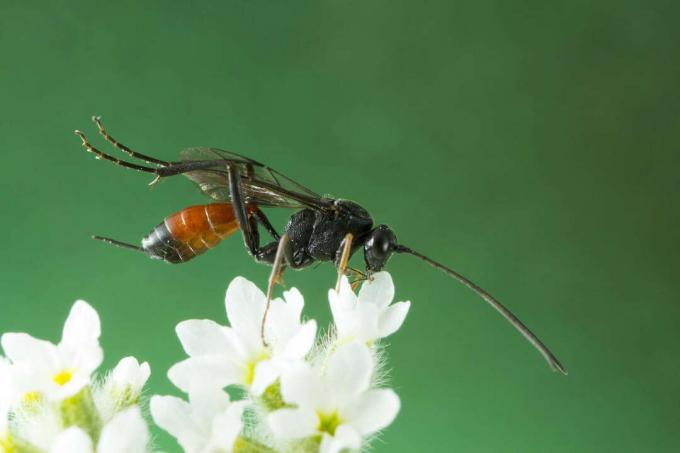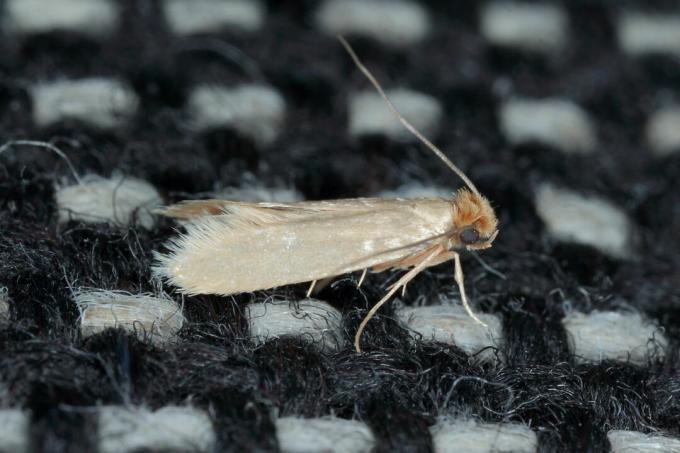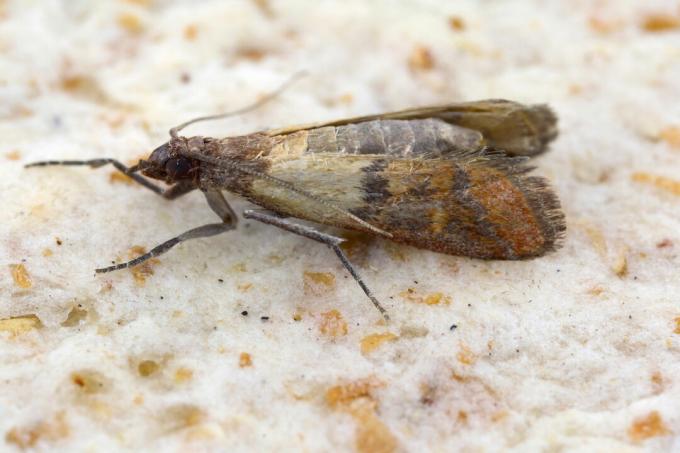Moths are a nuisance. Here you can find out how you can effectively declare war on textile moths and food moths with parasitic wasps.

The ichneumon wasp (Trichogramma evanescens) is an extremely useful helper when it comes to fighting textile and food moths. It is a parasite that lays its eggs in the eggs of its host. With a size of just 0.4 mm, the parasitic wasp can hardly be seen with the naked eye. In addition, the parasitic wasp has no influence whatsoever on humans, does not sting and disappears on its own when all of the host's eggs are parasitized. We'll tell you how you can use parasitic wasps as beneficial insects against textile moths and food moths and where you can buy the little creatures.
Parasitic wasps against clothes moths
the Clothes moth (Tineola bisselliella) is a real moth (Tineidae), which is distributed worldwide. It is around six to nine millimeters in size. The butterfly lays its eggs on textiles, preferably on items of clothing made from animal hair - such as wool, woolen fabrics or furs. The larvae of the clothes moth need the keratin (protein of the animal hair fiber) and when they eat they leave behind unsightly holes and a musty smell.
With the Plantura parasitic wasps against clothes moths you can solve this problem simply and elegantly. The ichneumon wasps are delivered in the egg stage on small cards. Over a period of several weeks, these are placed or hung in the closet near the infected items of clothing. The relatively lengthy process of fighting the clothes moth is necessary to safely cover all generations of the clothes moth. The parasitic wasp hatches from its egg, parasitizes the moth's egg and thus prevents the larvae from developing into harmful butterflies.

Parasitic wasps against food moths
There are many types of Food moths. These include, for example Dried fruit moth (Plodia interpunctella), the most common of which is the corn moth (Nemapogon granella), the rice moth (C.orcyra cephalonica) and the Flour moth (Ephestia kuehniella). The infestation by food moths is not only unsavory, but also harbors the potential for disease. The larvae feed on the respective food and leave their excretions behind. They are all effectively combated through the use of parasitic wasps.
Here, too, the parasitic wasps are brought out in the egg stage on special cardboard. The cardboard should be in close proximity to the site of the identified moth infestation. More parasitic wasp eggs should be spread over a period of several weeks so that the entire development cycle of the moth is covered. The parasitic wasp hatches, parasitizes the moth eggs and thus kills its host. Once the moth problem is completely eliminated, the parasitic wasp will also gradually disappear. the Plantura parasitic wasps against food moths therefore come in four deliveries that you receive every 14 days.

Parasitic wasps: effective against lice, whitefly and co.
The parasitic wasp can be used as a beneficial insect not only against moths. However, the search for hosts for the various beneficial species is very specific. Therefore, it should be checked beforehand whether an interaction between beneficial insects and pests can take place at all in the respective case. Expert knowledge is often required for this, but this is usually provided by the seller. As mentioned earlier, is Trichogramma evanescens very effective against clothes and food moths. For use against clothes moths, however, the species Trichogrammahabrobracon conceivable.
The most important thing, however, is: The beneficial insects have to find ideal living conditions so that they can multiply faster than the pesky pests. The temperature in particular plays an important role here. For more interesting facts about the parasitic wasps and the use of beneficial insects in general, please read our crop protection article Control of scale insects.



